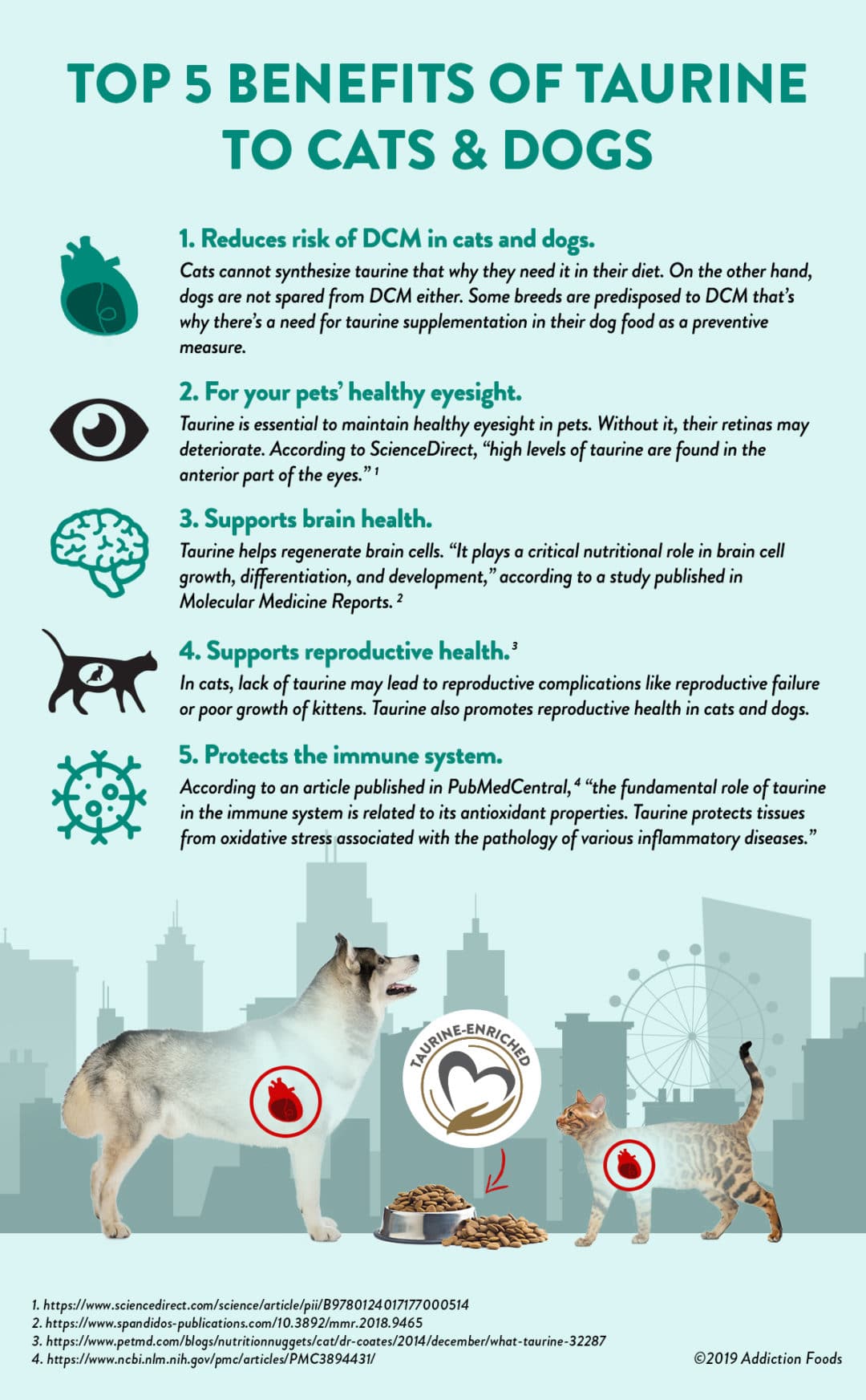
But does this mean that you should never feed your cat tinned tuna? The safest way to feed your cat tuna is to offer them tuna-based cat food. Moreover, tuna-flavored cat food still smells and tastes like tuna, so it’s ideal for cats that crave tuna or cats with a poor appetite.ĭue to technological advancements, the most beneficial component of tuna (docosahexaenoic acid) can now be found in other foods. That way, your cat will benefit from the high levels of docosahexaenoic acid (DHA) in tuna but will still be eating a nutritionally balanced meal. The safest way to feed your cat tuna is through a complete cat food that contains tuna.
#Taurine for cats benefits how to#
How to Maximize the Nutritional Benefits of Tuna Instead, choose a complete, nutritionally balanced cat food that has tuna on the ingredients list. If you’re concerned about the health risks of canned tuna, it’s recommended that you get some tuna-flavored cat food.Ĭanned tuna is not a balanced meal because it contains low levels of taurine. These fish live in shallower waters and will have consumed less prey during their lifetime, so the mercury concentrations in their bodies will be significantly lower. This is made from smaller tuna fish, such as Skipjack and Tongol. You can opt for a lower-level mercury product, but choose chunk light tuna. However, large and long-living fish, such as albacore or bluefin tuna, contain higher levels of mercury than smaller fish.įarmed tuna contains lower levels of mercury than wild-caught fish. Low-Mercury Tunaĭue to water pollution, all fish and shellfish contain some mercury. The sodium in brine can cause dehydration, and excessive sunflower or olive oil consumption can cause diarrhea. If you feed your cat canned tuna, make sure it’s in spring water rather than brine (saltwater) or sunflower oil. The canning/cooking process destroys thiaminase, so canned and cooked tuna is less likely to lead to a vitamin B1 deficiency than raw tuna. Raw tuna contains thiaminase, which is an enzyme that destroys thiamine (vitamin B1.) Here are the healthiest ways to feed your cat tuna:Īlthough raw food has some health benefits, you should not feed raw tuna to cats. Some forms of tuna are safer for cats to eat than others. This can be useful if your cat has cold feet due to circulatory issues. Iron, riboflavin, niacin, and potassium improve a cat’s blood flow and red blood cell proliferation. The consumption of Omega-3 fatty acids, vitamin B complex, and Thiamine are known to give a cat more energy. Cats need protein-rich foods for muscle repair and growth. In the wild, a cat’s diet is high in protein. It is high in the amino acid lysine, which is essential for cats. Tuna can stimulate a cat’s appetite if it is reluctant to eat. This can lead to fatty cell and tissue inflammation. This occurs when a cat is deprived of Vitamin E. Canned fish contains mercury, which is toxic to cats. This could result in vitamin B1 deficiency, according to Vet Specialists. Some forms of tuna contain the enzyme thiaminase, which destroys thiamine (vitamin B1). It is unsuitable for cats with kidney disease. It could lead to dehydration, high blood pressure, and urinary problems. Canned tuna (in brine) is very high in sodium (salt). Here are the reasons why tuna is unhealthy for cats: Unfortunately, foods that taste good are not always the healthiest for cats.


Tuna has a strong, fishy smell that is very appealing to cats.You may find that some cats are disinterested in tuna, but they will usually be the exception to the rule.

1.12.2 Avoid Tuna Chunk Treats Why Do Cats Love Tuna So Much?


 0 kommentar(er)
0 kommentar(er)
